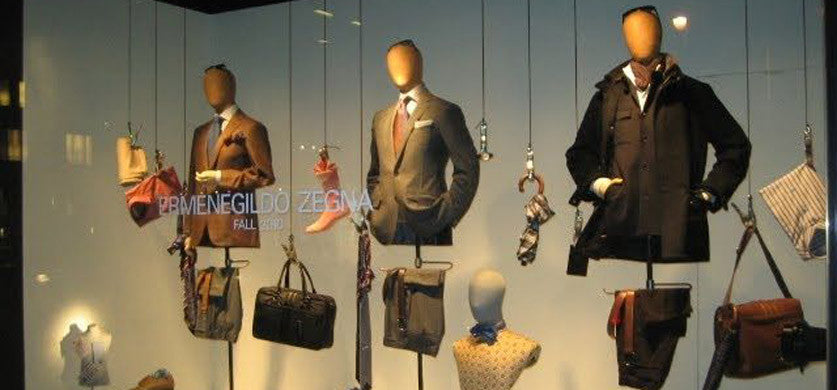Your Cart is Empty
Free Shipping On All Orders In November - No Coupon Code Necessary
Free Shipping On All Orders In November - No Coupon Code Necessary
Free Shipping On All Orders In November - No Coupon Code Necessary
Free Shipping On All Orders In November - No Coupon Code Necessary

June 16, 2016 3 min read
Almost every day, in our way to work or school, we walk by apparel stores inevitably seeing beautiful dresses and suits that make us cry out silently in our mind: “How would it be to wear this dress or this suit?”
What makes us be attracted by these pieces of clothes? The answer is simple: dress forms. Just think about this: how attracted would we be if we saw in an apparel store a dress that is just hanging on a hanger? The fact that a dress or a suit is carefully put on a dress form makes us visualize how it would fit our bodies.
Even though the history of mannequins dates back to only the beginning of the 20th century, the dress forms’ history dates long back. “Guilty” of this fascinating discovery is Howard Carter, the well-known English archeologist and Egyptologist, who discovered the Tutankhamun tomb in 1922. In the tomb he also found a wooden dress form, which was probably used to display the famous Pharaoh’s clothing. Later on it was proved that the dress form found in the tomb had the exact measure of the Pharaoh.
This event earned a great importance in the not so long history of fashion. History tells us that the famous Pharaoh of the 18th dynasty of Egypt was not the only one who used a dress form. It seems that the Emperor Nero’s wife used to have such a dress form designed after her own body for reviewing her clothing items. However, the dress form found in Tutankhamun tomb remains the oldest proof of dress form’s existence.
Nowadays, the dress forms are used in two ways: as a holder which helps the tailor or the designer to measure, cut or make changes to the material being used to create a clothing item or as a thing which helps the owner of an apparel store to display the clothes he or she wants to sell. How are these dress forms used in apparel stores? The answer depends on the type of dress form one uses. We talk here about at least six different types of dress forms:
Professional body forms
Even though this type of dress forms was initially created as a tool for the use of tailors, nowadays professional body forms are used in all kinds of apparel stores. What makes them special is the fact that are built from the ground up, in their construction being used higher quality materials which make them long-lasting. It is recommended to use these professional body forms in such a way so you can obtain a profit. What we want to say is that these dress forms should display the most expensive clothing items an apparel store has or (why not?) those clothing items that possess some kind of unique high quality look.
Male dress forms
As the name suggests, these dress forms are built in such a way so it can resemble a male’s body. This type of dress forms includes torso, torso cover, neck and base. It should be used to display men’s clothing items, from T-shirts and shirts to suits and other related items.
Female dress forms
Female dress forms have all the features present on the male dress forms, the only difference being the shape of it, which is made to look alike a female body. This kind of dress forms should be used in apparel stores to display women’s clothing, which is vaster than men’s clothing. Therefore, one should use female dress forms to display shirts, T-shirts, undershirts, blouses, dresses, skirts, jackets so on and so forth.
Child dress forms
Child dress forms have mainly the same structure as the two previous dress forms presented, the only difference being the size of it, which is obviously smaller. It can be used to display children’s clothing, whether we talk about girls or boys.
Table top forms
This kind of dress forms comes in both male and female shapes and the main use is to display men and women clothes, having the ability, as the name suggests, to stand on a table in order to be on top and stand out.
Dress form torsos
If all the above dress forms have a base which allows them to be able to stand, dress form torsos have as main feature the lack of this base. Dress form torsos should be used to display mainly not very long or large male and female clothing items and also a lot of clothing accessories.